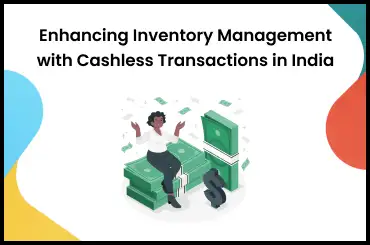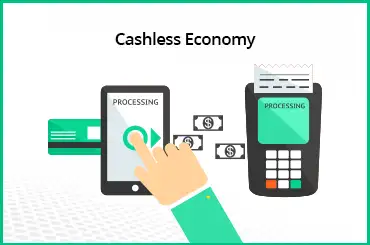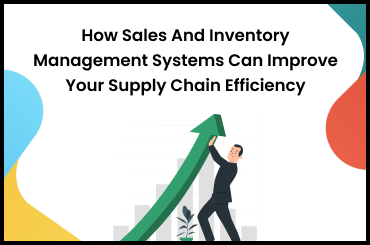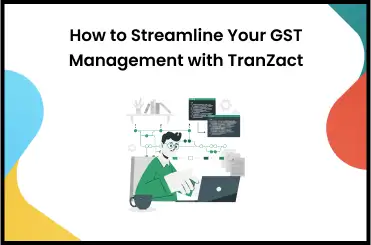Invoicing and collecting payments on a timely basis are important factors to run a successful business. An invoice or bill is a document that certifies a business' sale or supply to another company or customer. It includes details on the sale transaction, including the buyer's information, quantity, value, tax, and payment terms.
The only difference between invoicing and billing is that the customer uses the term 'bill' to describe the payments they owe suppliers for their goods or services. In contrast, the phrase invoice is typically used by a business attempting to collect money from its clients.
If your business happens to involve cross-border transactions, one of the most important things to keep in mind when it comes to invoicing and billing is that every nation has its own laws and regulations, most often in connection to its indirect tax laws. For instance, the Goods and Services Tax (GST) law in India contains detailed rules regarding the type and issuance of invoices and bills.
In this blog, we'll talk about all invoices and billing aspects, and the software that can make your invoice process a breeze. Let's get started!
What Is an Invoice?
An invoice is a document the seller provides to the customer to request payment. It consists of the details and price of the goods or services demanded by the buyer. In simple terms, an invoice is a basis for requesting clients or customers to make on-time payments.
If an invoice includes the names of the seller and the client, the description and cost of the goods or services, and the terms of payment, it can also be used as legal documentation.
One of the most common ways of generating invoices includes sending the physical copy or digital version using an invoice generator. Depending on the agreed-upon payment arrangements, invoices may be paid in whole at once or over time in installments.
Who Uses the Invoice?
The main objective of an invoice is to act as a source document that records sales transactions between businesses or by a business organization to its customers. All businesses, small and large use an invoice to get paid on time for the products or services offered. It's also used by them to monitor sales, inventory, and cashflow.
What Is the Purpose of an Invoice?
Businesses utilize invoices for a variety of purposes, including the following:
- To source timely payments from customers.
- To maintain a record of the purchases, sales and inventory.
- Invoices can be used for historical data inputs to forecast upcoming revenues.
- To maintain records for tax and audit purposes.
Benefits of Using Invoices
Invoicing has changed the way businesses work. It has simplified and streamlined business processes and has safeguarded the interests of both - the buyers and the sellers. Here are some benefits of invoicing:
Preserving records
The capacity to maintain a legal record of the sale is the main advantage of an invoice. This makes it easy to learn who purchased, or sold, and when goods were sold.
Payment monitoring
An invoice is a crucial piece of accounting operations. It helps to keep track of payments and outstanding balances which is helpful for both the buyer and the supplier.
Legal defense
Legal evidence of a pricing agreement between the customer and seller can be found in an accurate invoice. It shields both parties from false lawsuits.
Simplify tax filing
The company may record its income more accurately and ensure that the right amount of taxes are paid by keeping track of all sales invoices.
Enterprise analytics
Businesses can learn about their customers' purchasing habits and uncover trends, popular goods, peak purchase periods, and more by analyzing invoice data using invoicing software. This also aids in creating marketing plans that are more effective.
When Is the Invoice Raised and Issued?
For most businesses supplying goods, an invoice is usually generated upon the delivery of goods, with an average credit period ranging up to 30 days from the invoice date.
Service-based businesses usually raise an invoice every month post the completion of the service offered to their clients. The credit period is similar to goods-based delivery - 30 days from the invoice date.
When filing tax invoices, depending on whether the supply comprises products or services, businesses issue an invoice that complies with GST laws. Therefore, the time and limits to issue the invoice for goods and services differs from case to case basis.
What Is an Invoice Due Date?
In a broad commercial context, the term 'due date' refers to the latest date by which a payment on an invoice may be made before it becomes past-due. These dates indicate when a payment is due, based on different types of billing, and missing the deadline will result in subsequent penalties and interest charges.
The inclusion of due dates on invoices facilitates prompt payments by keeping the customer informed on the last date of when the payment is due. This helps eliminate any ambiguity regarding the payment information.
Indian Laws Regarding Invoicing
If your business is registered under GST, you must provide GST-compliant invoices to your customers as per the invoicing rules under GST. While business entities can choose any invoice format, specific fields are mandatory and should be present in such invoices according to Rule 46 of Central Good and Service Tax (CGST).
For the GST network to validate and authenticate an already created standard invoice, e-invoicing requires submitting it to a common e-invoice portal or Invoice Registration Portal (IRP).
A tax invoice serves as proof of supply under GST, making it essential for the purchaser or recipient to claim Input Tax Credit (ITC). The recipient must possess a GST-compliant invoice to claim the ITC, as stated in Section 16 of the CGST Act.
The Indian Customs law also makes reference to business invoices for imports and exports in addition to GST. A commercial invoice and packing list must be sent with the customs declaration form, also known as the Bill of Entry or Shipping Bill, in accordance with current customs rules for import and export.
For customs reasons, the business invoice and packing list are crucial since the former establishes the worth of the imported or exported goods, and facilitates the examination of quantity and duty.
Types of Invoices
There are various types of invoices that companies may send to their clients or consumers. All of them are explained below:
Basic Invoice
The most standard type of invoice, used primarily by small firms, is a basic invoice. It may be customized to match specific sectors and billing cycles.
Commercial Invoice
A commercial invoice is a record offered by a business for goods it offers to customers all over the world. Commercial invoices also provide sale-related data necessary to compute customs duties for international transactions.
Proforma Invoice
The proforma invoice is yet another type of invoice wherein before delivering services, a business needs to send a proforma invoice as an estimate. A proforma invoice estimates the cost of the work that has to be done and provides that information to the client. Proforma invoices must be modified to reflect the hours worked once a project is finished.
Timesheet Invoice
Timesheet invoices are sent to businesses to charge for work done or services rendered on an hourly basis. This kind of invoice is usually used by contract employees who are paid on an hourly basis by their employers.
Credit notes and Debit notes
Credit notes and debit notes are also known as debit memo and credit memo. They are used to lower and raise the values of previously submitted bills.
Credit notes are employed, for instance, when a company wants to offer a discount or a return to its clients or consumers. Debit notes, however, are utilized to raise the original invoice's quantity or value.
E-invoice
An electronic invoice is one that is delivered electronically and follows a predetermined format. E-invoices can be automatically loaded into the purchasing organization's accounts payable system since they contain invoice data in a structured and digitized format.
Other invoices include expense reports, interim and final invoices, past-due invoices and recurring invoices.
Content and Format of Invoice
It's important to consider the services or supplies demanded by your clients, and your business objectives when choosing the ideal invoice format for your company's invoicing processes.
Choosing a format that enables you to efficiently bill for your services while enabling you to get paid on time is the key to selecting the ideal invoice template.
With a professionally drafted invoice, you can seamlessly bill customers for your services or sales, set up account information, receive payment on time, and have all the information you require, including tax information.
Structuring your invoice with all pertinent information will not only help your customers pay you on time, but will also assist you in managing the financial aspects of your business. Using the correct format will make your invoice operations more organized and efficient. In addition to meeting business and customer needs, the organization must follow all applicable GST invoice legislation and e-invoicing regulations.
An accurate invoice would include the items listed below:
- A header that features your company name and logo.
- A unique identity or an invoice number.
- Information about your company's location.
- Billing date.
- The number and description of the sold goods or services.
- Additional fees, taxes, or levies.
- Total amount due.
- Terms of payment.
- Due dates.
The following elements should be present on a tax invoice:
- Address, name, and GSTIN of the vendor or seller.
- If the recipient or buyer is registered under the GST HSN code or SAC for goods and services, their name, address, and GSTIN must be provided.
- Serially numbered and specific invoice numbers for the specific fiscal year.
- Invoice types, such as tax invoices, supplemental invoices, and updated invoices.
- Description of the provided products or services.
- Quantities of products and services in units.
- Each item's tax rate listed on the invoice.
- Separate columns for the CGST, SGST, IGST, or UTGST amounts.
- State of the supply and the source.
- Total number of supplies of goods and services.
- If the delivery address differs from the supply location.
- A reverse charge must be specified if it applies.
- Digital signature of the supplier or another authorized individual.
Why Should You Raise Invoices Electronically?
When creating an electronic invoice, there are several modes businesses can rely on - web-based form, using a billing software, or creating one via an online portal. Once an invoice is created, it can be sent to the recipient directly via the billing software or as an email attachment.
One of the principal things to remember is that electronic invoices are not scans of paper invoices or documents that have undergone OCR processing. They cannot be in manual formats that require editing like Word, Excel, or PDF. One of the important things to note is that the invoice needs to be in a format that the buyer's system can comprehend and process for payment.
Electronically generated invoices or e-invoicing should be raised when one wants to eliminate problems like manual data entry errors, gaps in accuracy checks, and software swapping; they also serve as a ledger and accounts for the transaction of the buyer's or debtor's account.
Invoicing Best Practices
To ensure your invoicing process is up-to-mark, we have listed the below best practices for your reference:
- Timely issue of invoices.
- Confirm the billing address.
- Be aware of the process of internal approval.
- Include clear terms of payment.
- Don't forget to include an address for remittances.
- Make sure you include all information required by the customer.
- Late fee details must be included.
- Ascertain the invoice's clarity and completeness.
Invoicing Made Easy With TranZact
A scaling business requires software that can simplify your billing and invoicing process, and TranZact helps you do that. With TranZact, you can create GST-compliant invoices instantly by using the billing information. Along with this, the software even lets you print, download or email these invoices directly to your clients. You can also send your clients real-time payment reminders to better manage your cash flow.
A solid invoice is more than a sales receipt; it's a legal record that safeguards your company from mistakes and risks and maximizes your input tax credit (ITC). Get your hands on TranZact to enhance your cash flow, simplify your bookkeeping and accounting operations, and enhance your overall invoicing process!
FAQs on Invoicing and Billing
1. What is the difference between accounting and invoicing?
Invoicing is a simpler process than accounting, which involves many other sub-processes. Accounting focuses on recording, categorizing, and summarizing financial transactions. On the other hand, invoicing is concentrated on sending out detailed transaction summaries and obtaining payments.
2. Is invoicing the same as accounts receivable?
Accounts receivable refers to payments that consumers owe you. It comprises tracking pending payments and also the collection procedures. An invoice that has been sent by you becomes a component of your accounts receivable until it is paid.
3. Who is responsible for invoicing?
An invoice clerk, also known as a billing clerk, manages incoming and outgoing invoices for a business' accounting department. They are primarily responsible for preparing customer invoices, ensuring all invoices are accurate and fixing billing errors.
4. Who is eligible for invoicing?
If the value of the supply is more than Rs. 200/-, a GST-registered taxpayer must issue an invoice or a bill of supply.
5. Is invoicing part of procurement?
Yes, invoice processes and management of purchase orders are an important part of procurement. A procurement cycle cannot be completed unless invoices are sent to the supplier and paid for accurately.
6. What is the difference between a tax invoice and a bill of supply?
Tax invoices are used for all taxable sales, local or central, while a Bill of Supply is used for exempt sales and composition dealer sales.
















